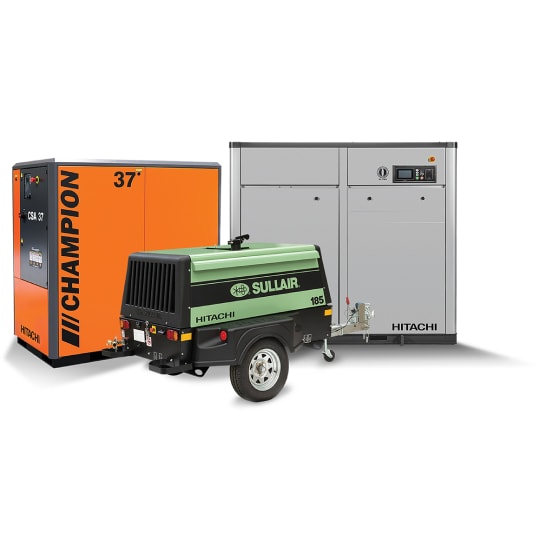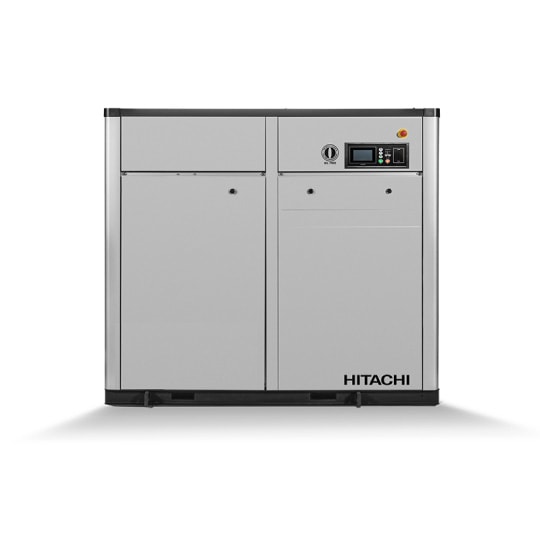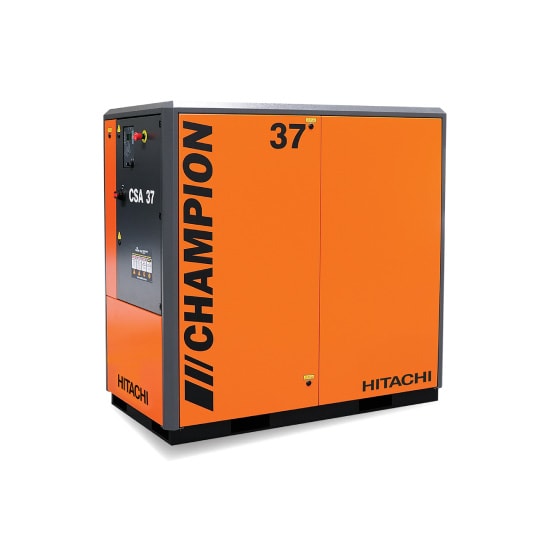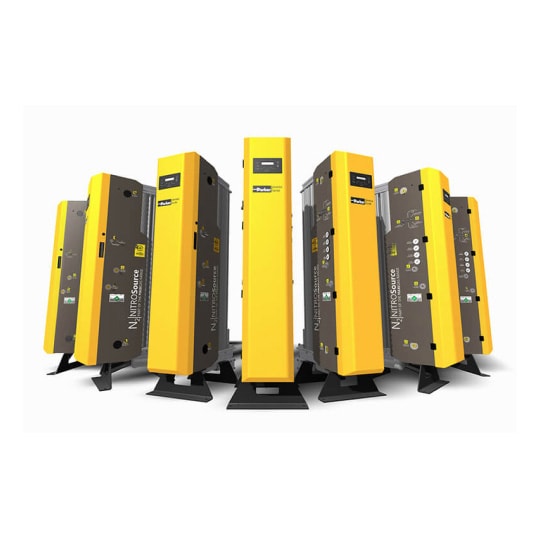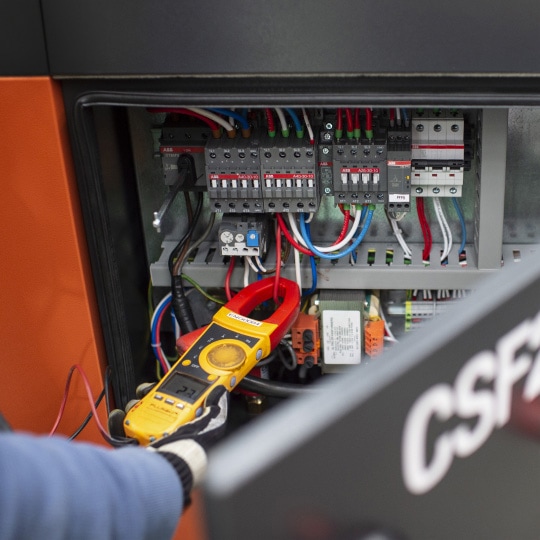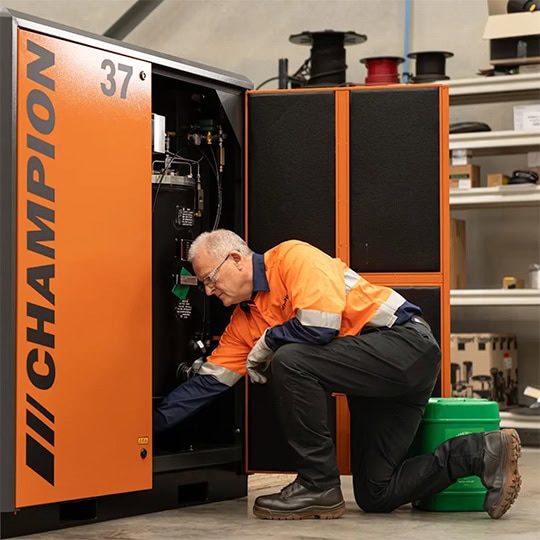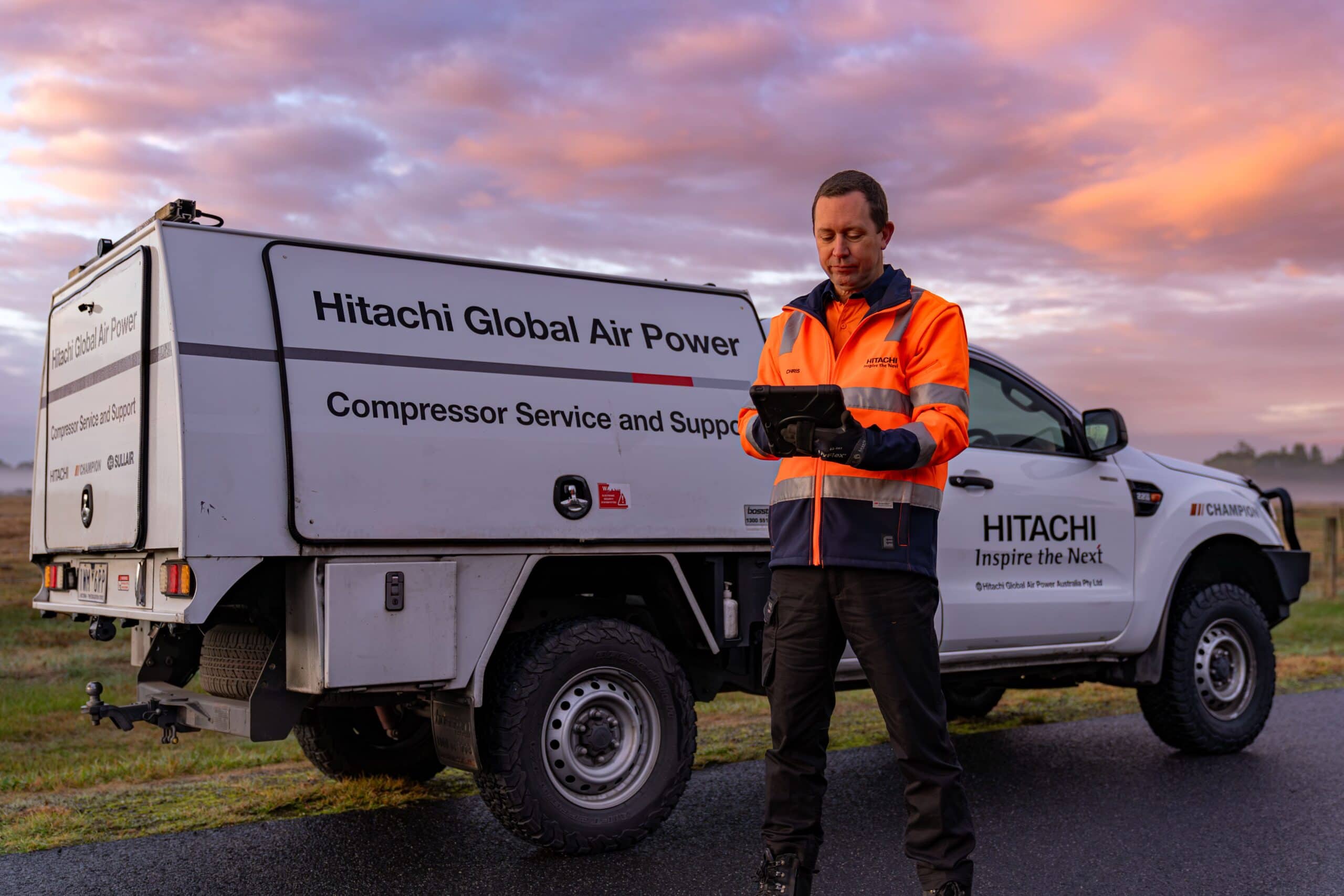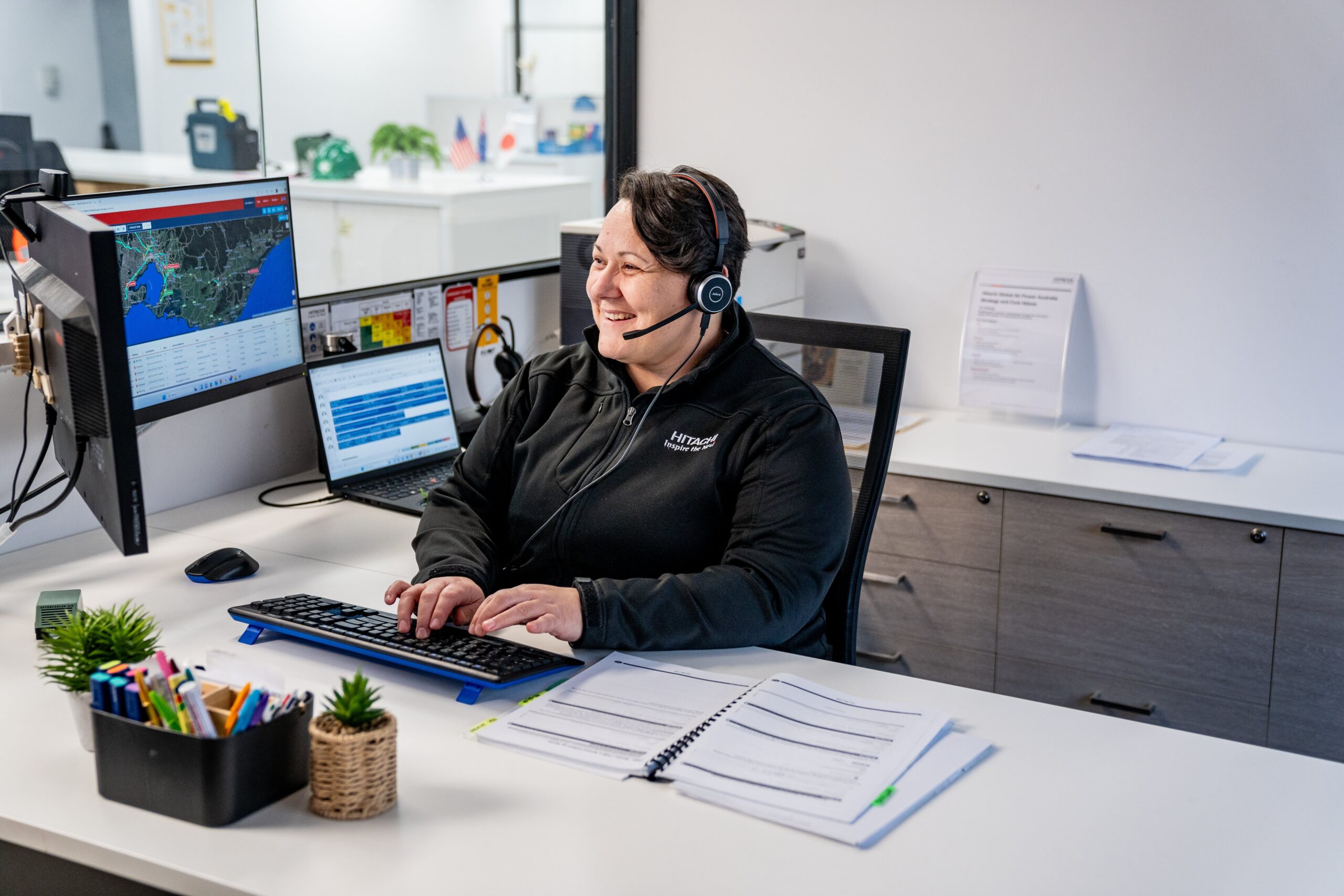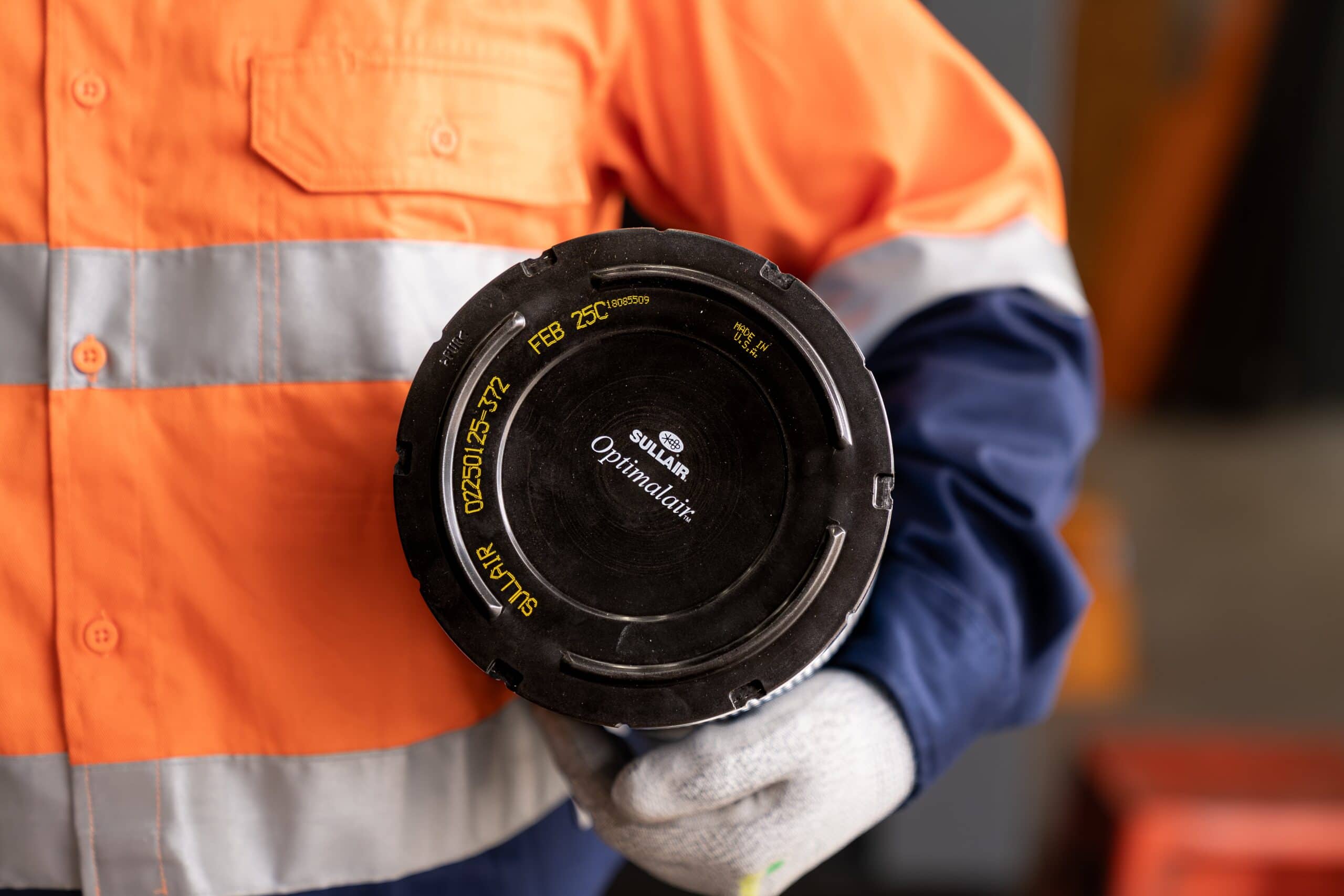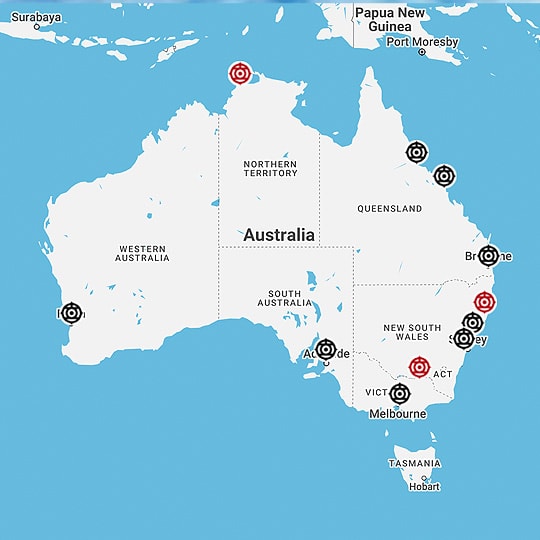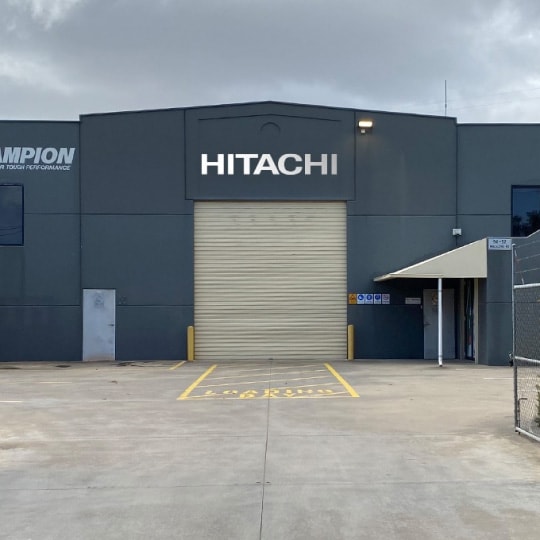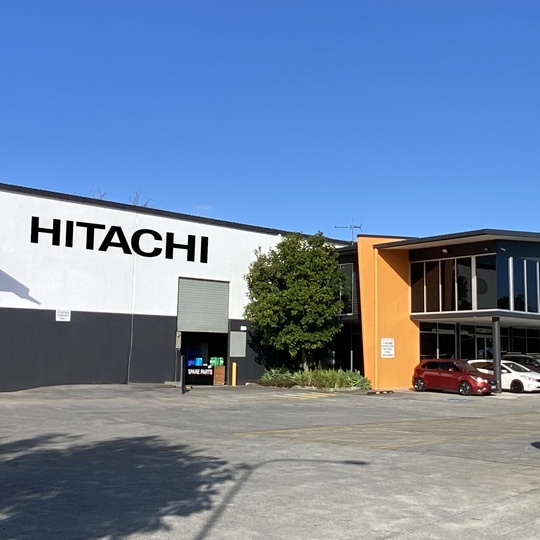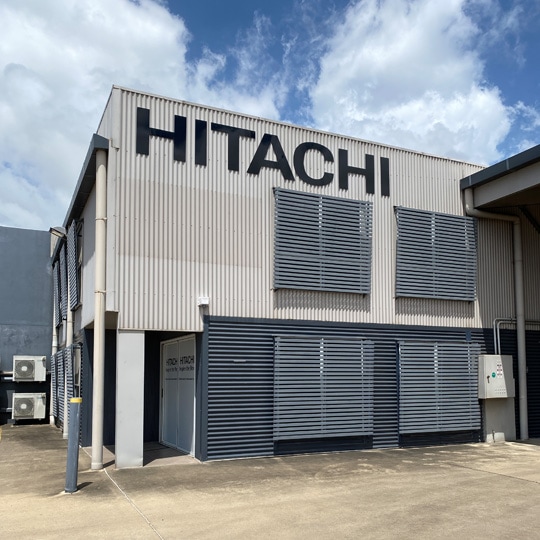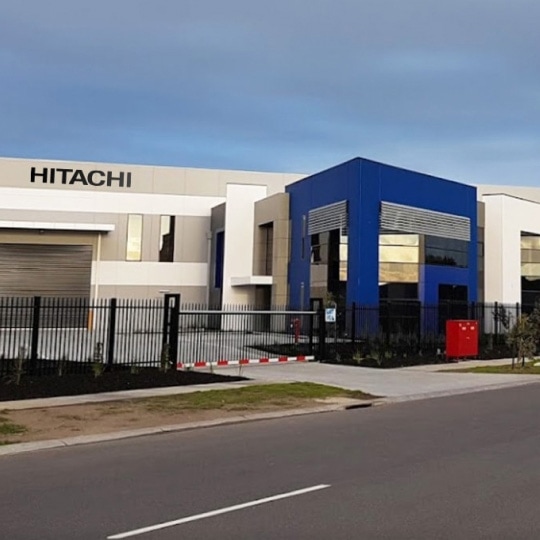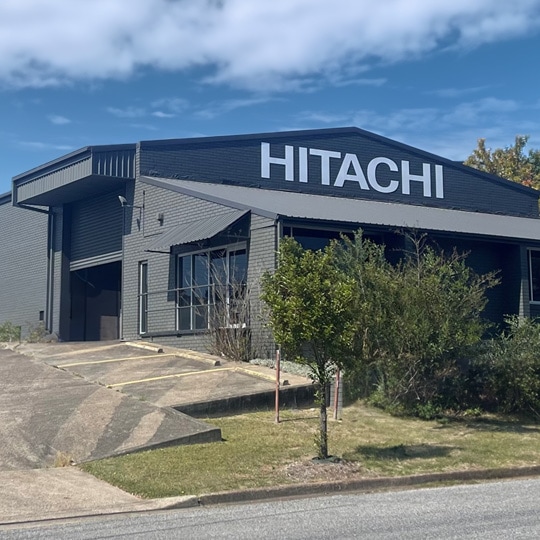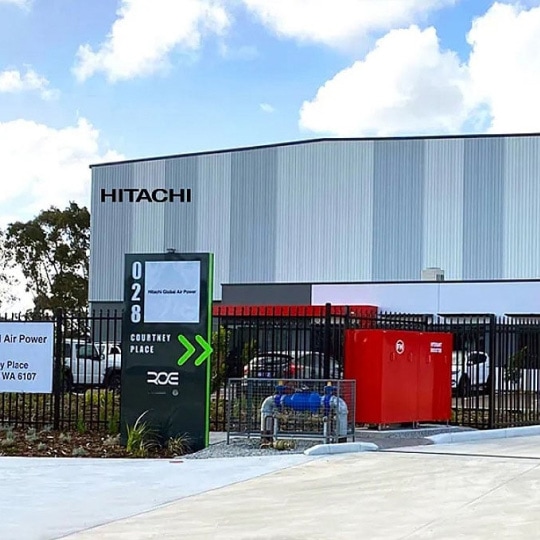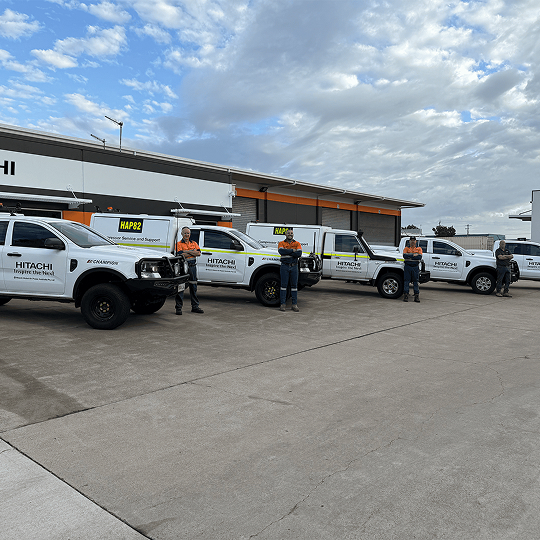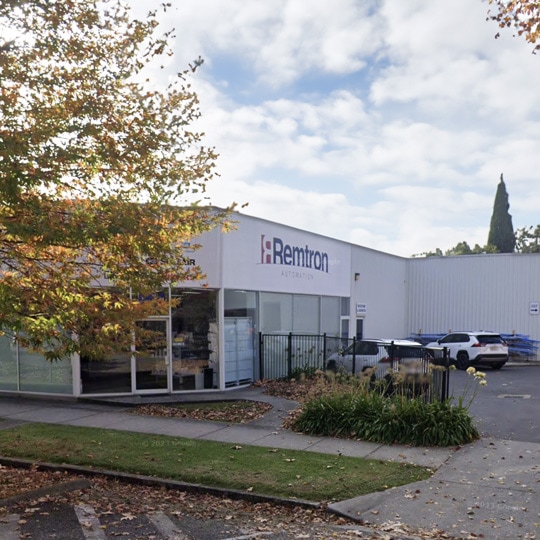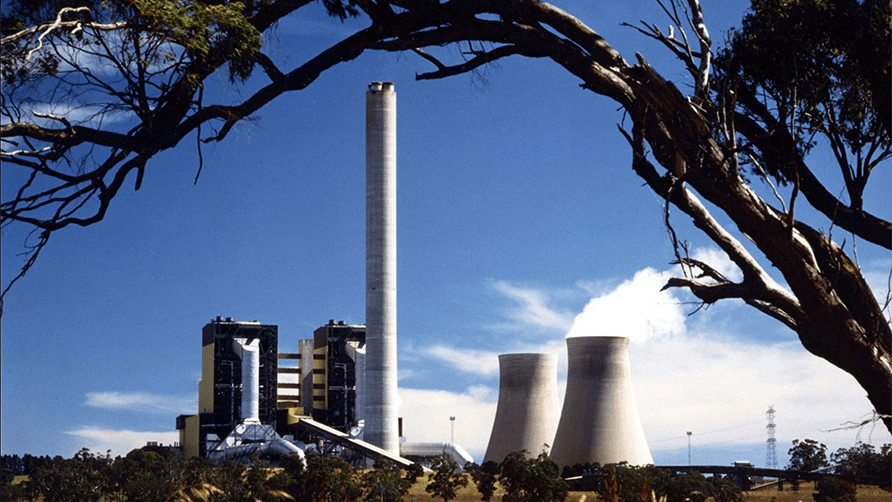
The thing Sullair is probably best known for is how reliable and durable our equipment is. We know this to be true because we experience it every day, but every now and then a story comes our way that reminds us JUST how legendary our compressors are.
Enter the little compressor that could – a VOCii110 that left our hands brand new and shiny in 2009 and has had quite a journey – covering 13 years, two states and 35,000 hours of operation.
Powering Port Augusta
For 8 years, the VOC 110 was onsite at a northern power station in Port Augusta, serviced by our Adelaide branch. The customer was thoroughly supported by that branch which at the time included Russell Watson and Gary Smith. Gary was one of the factory trained skilled service technicians that took care of that machine during the period of ownership. “This unit was kept away from the main part of the power generation, in quite a clean location. It was protected from the weather and not in an area where it was subjected to a lot of coal dust for example, so it was pretty clean”, says Gary. “When it was there they kept strictly to every recommendation we provided for maintenance and servicing, so as a result of that I don’t remember it really having any issues.”
A second life in Victoria
After 8 years’ service at that site, the compressor was decommissioned in 2015 due to impending closure of that station in 2016. On realising the power station in Port Augusta was closing, a lot of that machine’s components were prepared to be auctioned. Jay VanderStoep is Maintenance Manager at Loy Yang B power station in Victoria’s Latrobe Valley. “At the time we were in need of a new station air compressor so I decided to have a look through the auction papers to see if there was something suitable we could purchase.” This is when he came across the VOC 110 on sale in Port Augusta. “The compressor was probably already about 4 – 5 years old at that stage but the seller mentioned it had come from Sullair Australia, that Sullair were the service provider and they would be able to provide all the components plus history of the compressor. I wanted to be sure that if we put that unit in our power station it was going to be reliable. So instead of sending the compressor straight to Loy Yang B, I sent it to Sullair in Dandenong and had it fully serviced, tested and painted, then delivered to Loy Yang B”. The compressor was installed at Loy Yang B about 3 years ago then put into operation and has been running fine since.
A makeover at the air end centre
Wayne Liddell was heading up the Victorian Service Operation including the air end centre, as the local Customer Service Manager at that time. “That assessment determined the unit required a major service including some additional repairs”, he explains. “Throughout this process we also performed our standard bearing analysis. The results determined that the air end was in good operating condition as we expected, so the customer would still get many operational hours out of this unit moving forward before overhaul would be required”.
This is common practice for Sullair to perform air end bearing analysis at every service. All customers are then supported by Sullair’s air end centres placed around the country. Air ends come to our centres from all over Australia to be refurbished, rebuilt, or exchanged. The Sullair air end exchange service enables customers to exchange their faulty air end for an existing refurbished unit, giving them a customised solution that meets their immediate need and budget.
Building new relationships
This interlude as the compressor transitioned between Port Augusta and Loy Yang B ended up being a key moment for both parties. “Shipping the compressor from the auction direct to Dandenong meant I got to know a few of the people at Sullair and I was quite impressed with the work they did in preparing the second hand compressor for operations”, explains Jay. “After that our contract for our station air system came up for renewal so I invited Sullair to tender for the contract and they won it.”
In another funny coincidence, Loy Yang B was owned by a French company when Jay bought the VOC 110 from the northern power station in Port Augusta. Fast forward a few years and that company then inadvertently bought their compressor back by way of becoming the new owners of Loy Yang B power station.
“The result of us buying the VOC 110 by chance is that our company now has a good relationship with Sullair. If we hadn’t purchased this we may never have crossed paths. That compressor has been ticking along now with no trouble and I’ve since bought another two of them. The two new units are expected to arrive in September and they’ll probably be installed next year. This will mean we’ll have a triple redundancy set up on site – crucial because if Loy Yang B power station was to lose station air, the entire station would come to a complete stop and that could impact about 30% of the state’s electricity.”
National Service Business Manager Shael Esler was coordinating Loy Yang’s customer care and service plan at the time. “I remember discussing the service history with Jay and being able to give him an oversight as to the life of the unit to date which assisted his purchase decision. Through this we were also able to develop a care program that supported their servicing requirements on site.” This care program is still in place today and there’s plenty of life in the old girl yet as a result. “Customer care planning is about taking the initiative to ensure every one of our products is performing at maximum efficiency”, Shael explains. “Stories like this are great examples of us being able to keep track of our equipment, understand its potential and its rebuild or repair requirements when required, to get the best out of it for the longest time possible”.
This is yet another great example of how the life of these machines can be supported and extended with the right customer care, support, and maintenance. Although it’s now approaching its 14th year of operating, the VOC still has a decent amount of life left in it according to Wayne. “The estimated life of our compressors with the right operating environment and maintenance schedule is in excess of 80,000 hours.”

